By Louise Irvine
The Art of Tea exhibition and our afternoon tea parties were a popular attraction at WMODA. Now that we have begun the Great WMODA Pack-up, the energizing coffee break has assumed more importance! The invigorating qualities of the beverage have been recognized for thousands of years so take a break, grab a cup of “Joe” and learn more about the museum’s collection of coffee pots.
Spitting Image
Ronald Reagan famously said, “I never drink coffee at lunch. I find it keeps me awake for the afternoon.” The former president was lampooned as a coffee pot by the British satirists Roger Law and Peter Fluck. They formed Luck & Flaw in 1975 and created three dimensional caricatures of public figures which were shown in the New York Times, National Lampoon and Time magazine. Spitting Image, their political satire TV show, used puppet caricatures and ran on the BBC from 1984 to 1996. A spin-off mocking Reagan aired on NBC.
A coffee pot portraying Ronald Reagan and a teapot of Margaret Thatcher were part of the merchandising campaign for Spitting Image and sold as collector’s items during the 1980s. The Carlton Ware factory in Stoke-on-Trent and Hall China in East Liverpool, Ohio were responsible for these entertaining pots which were generously donated to WMODA by the late Joan Stacke-Graham.
Magical Berries
There are various legends about the discovery of coffee which date back to the first century AD. Apparently, an Ethiopian goatherder noticed his goats became energetic after eating berries from a particular tree and local monks began making drinks from the berries to keep them alert through hours of evening prayers. Word soon spread about these magical berries and coffee drinking spread across the globe from east to west. The first reference to “koffie” in the English language dates to 1582. The Dutch word was derived from the Arabic “qahwah” which means lack of hunger.
Penny Universities
The first English coffeehouses were opened in Oxford and London in 1652. Soon there were hundreds of coffee houses for men of all social classes to gossip, conduct business, and debate the news of the day. For the price of a cup of coffee, patrons could learn about politics, science and literature and the London coffee houses became known as penny universities. They became so much associated with equality and republicanism that King Charles II attempted to ban them in 1675, causing a public outcry.
The London Stock Exchange began in a coffee house as did the insurance company Lloyds of London. The auction houses of Sotheby’s and Christie’s began as salerooms attached to coffee houses. Early colonists brought coffee and the coffee house to America and the original location for the New York Stock Exchange was the Tontine Coffee House established in 1792.
No alcohol was served in coffee houses and the daily buzz of commerce was stimulated by coffee and conversation. Coffee houses are back in vogue today, often with free wifi to attract customers. I wonder what 18th century businessmen would think about Starbucks and Costa Coffee with their skinny lattes, cappuccinos, and expressos!
Coffee at Home
Women were excluded from the nation’s coffee houses and maybe that’s why they claimed it made men impotent in a petition of 1674! As the drink’s popularity grew in the 1700s, there was a need for specialized pots for domestic use. Tall tapering cylindrical forms with with high domed covers were fashionable. The Staffordshire potters copied silver shapes in their sturdy salt-glazed stoneware in the mid-18th century. Idyllic rural scenes and floral designs were popular for hand-painted decoration in colorful enamels. The long serpentine spout started low on the body and from the 1720s was placed on the opposite side to the handle. The bottom was wider than the top to help catch the sinking coffee grounds.
A taste for Turkish coffee, which is thicker, led to the tear-drop or pear-shaped coffee pot in the 1740s. Traditional Arabic coffee pots, such as the Dallah, inspired European potters to create exotic forms. A William de Morgan ruby luster design at WMODA is decorated with swirling fish in the Persian manner. In more recent years, Ardmore Ceramic Art in South Africa have transformed the humble coffee pot into fanciful ornamental designs.
Canadian fine Art photographer, Michael Harvey, gave the humble coffee pot a whimsical twist when he modeled it in the form of a brown paper bag in 1980. Harvey’s fantastic Pop Art designs transform ordinary objects into functional conversation pieces, including vases in the form of a gardener’s glove and tank top.
Cup of Joe
Coffee became particularly popular and patriotic in America following the revolt against tea taxes at the Boston Tea Party. Thomas Jefferson proclaimed, "Coffee - the favorite drink of the civilized world." “ Later, the drink helped energize tired troops during the Civil War. Today, coffee is America’s favorite brew and medical research links moderate consumption of about three or four cups a day with a longer life span. Drink up!
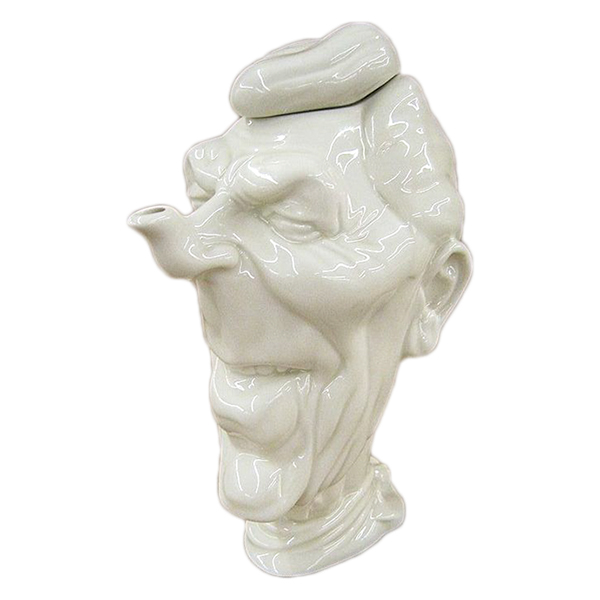
Hall Coffee Pot of Ronald Reagan
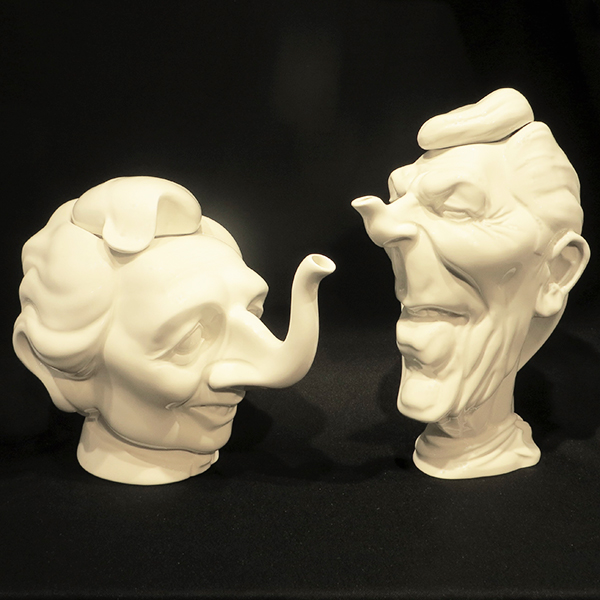
Spitting Image Margaret Thatcher and Ronald Reagan
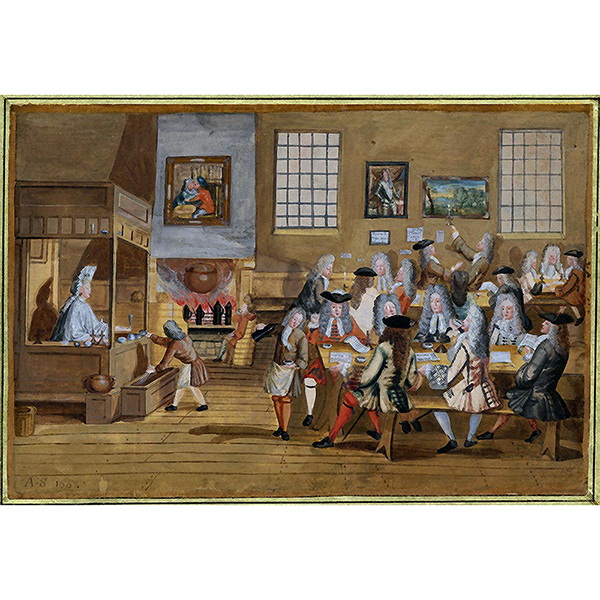
London Coffee House
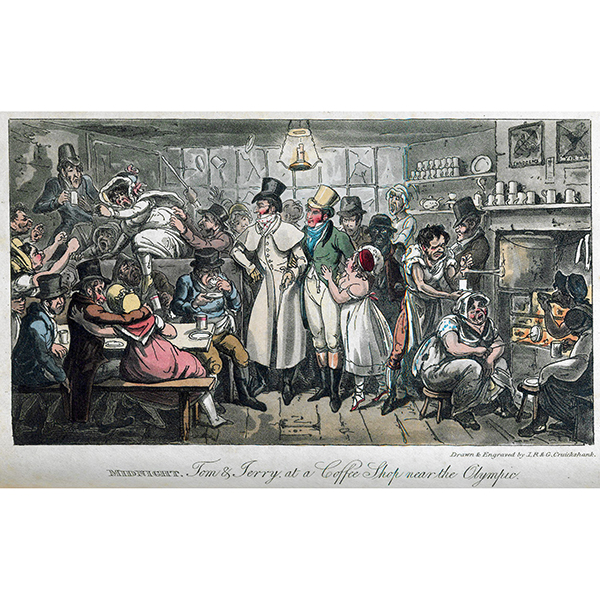
Midnight at a London Coffee Shop
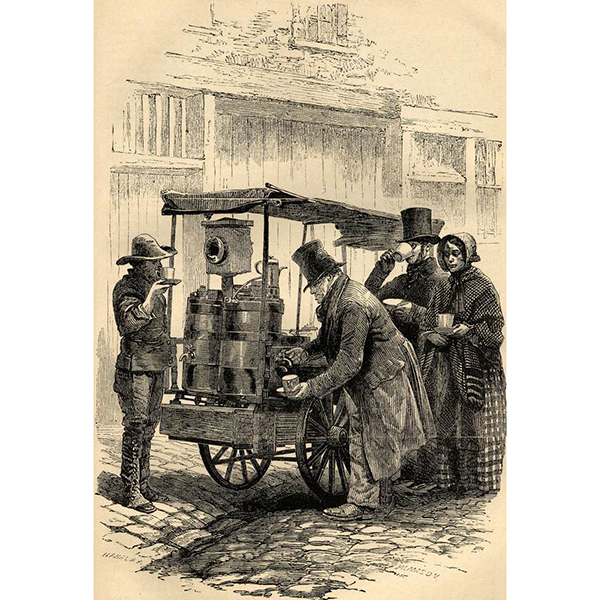
London Coffee Stall

Women’s Coffee Petition
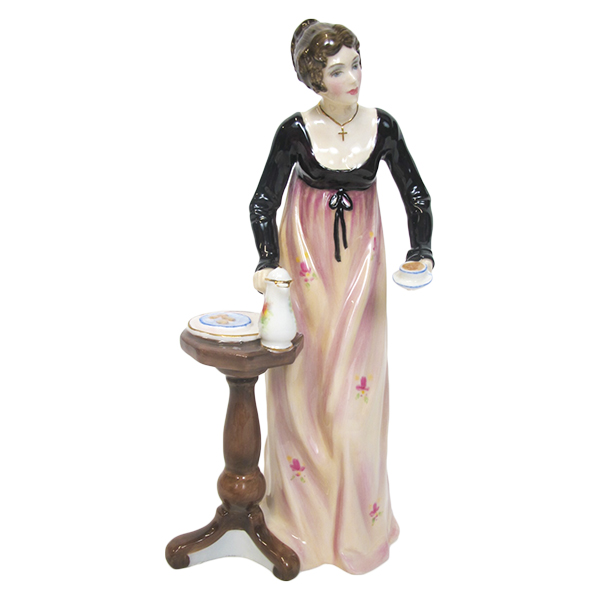
Royal Doulton Prototype Elizabeth Bennett
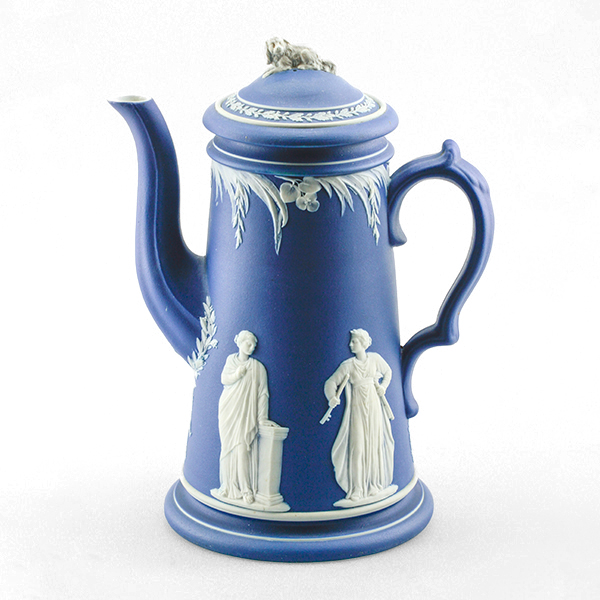
Wedgwood Muses Coffee Pot

Copeland Coffee Pot
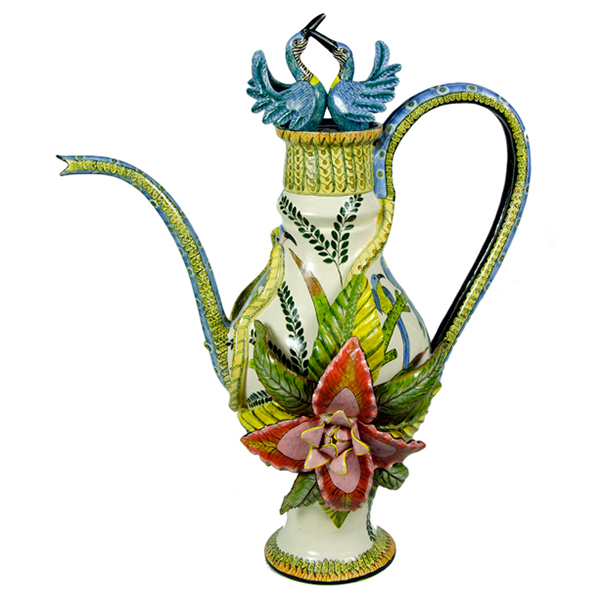
Ardmore Coffee Pot
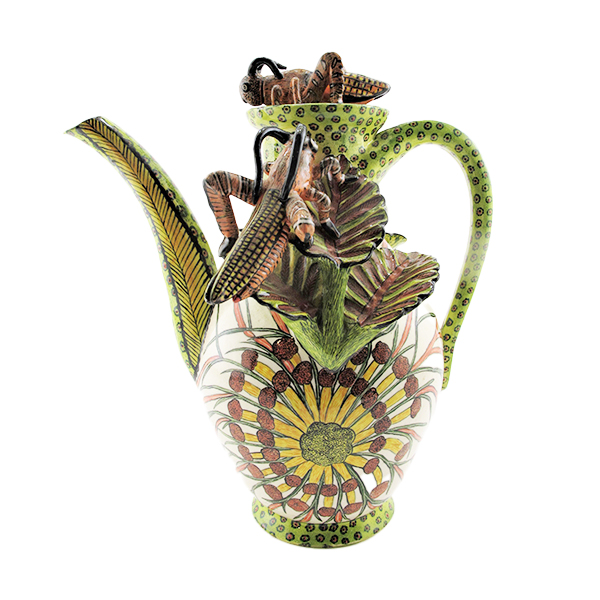
Ardmore Locusts Coffee Pot

Ardmore Coffee Pot
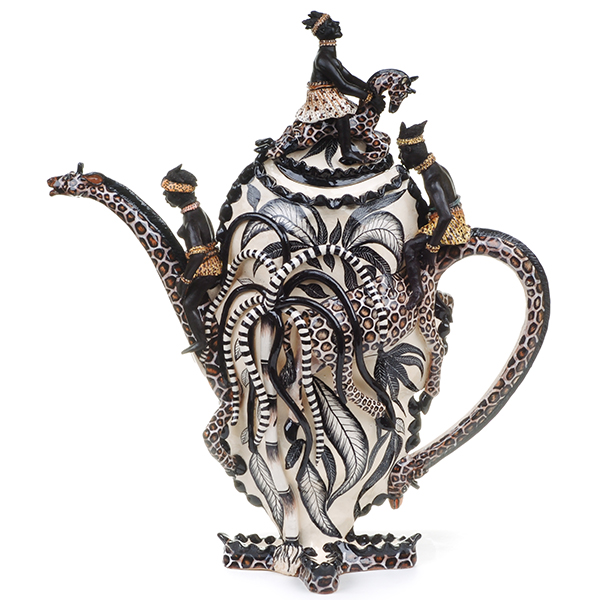
Ardmore Coffee Pot
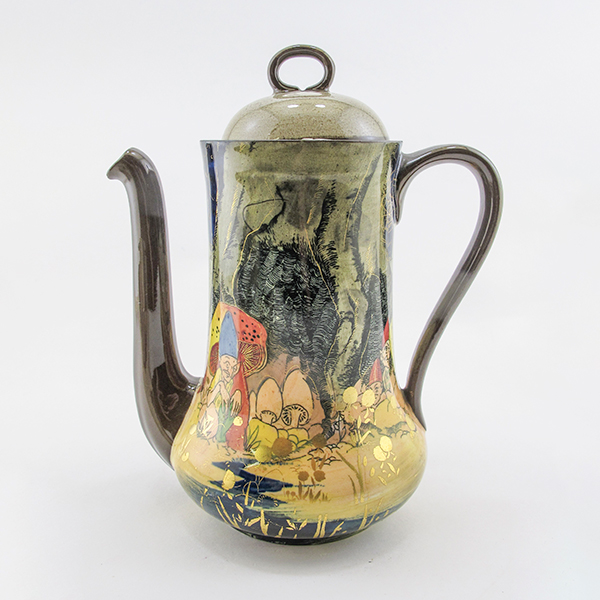
Royal Doulton Gnomes Coffee Pot
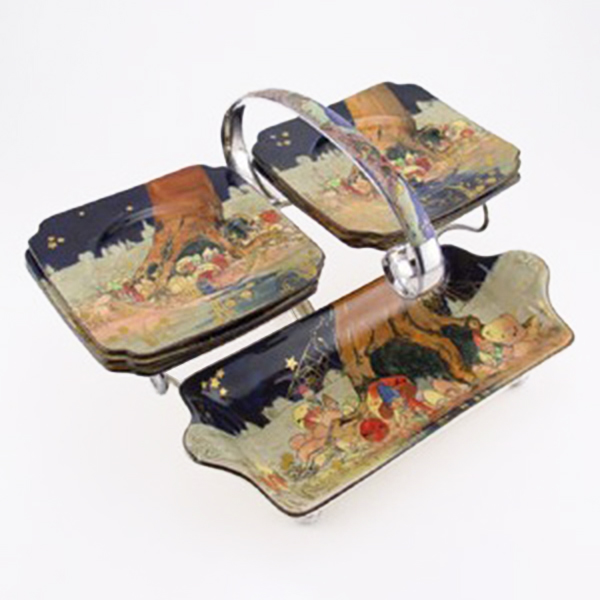
Royal Doulton Gnomes Sandwich Set

Royal Doulton Coffee Pot

Royal Doulton Flambe Coffee Pot
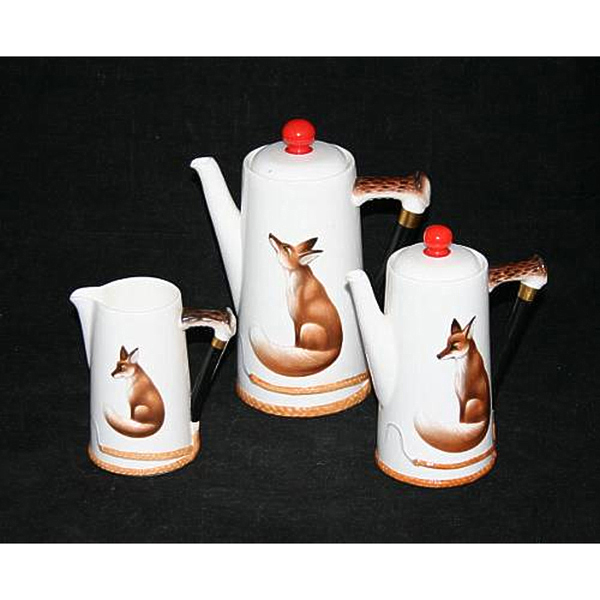
Reynard the Fox Coffee set
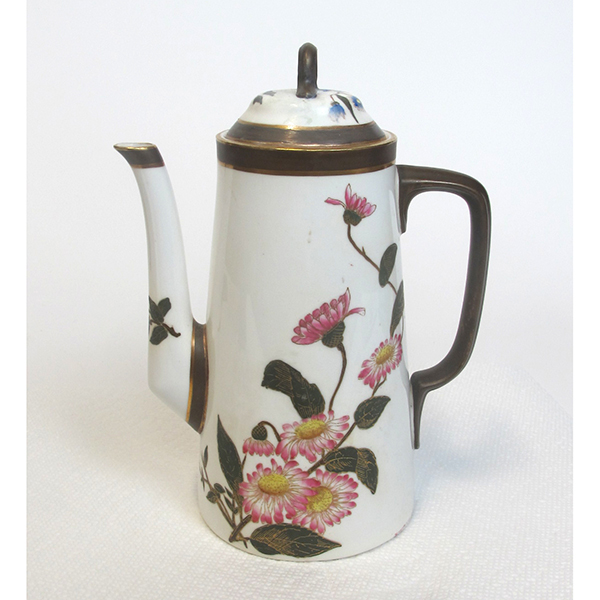
Royal Worcester Coffee Pot
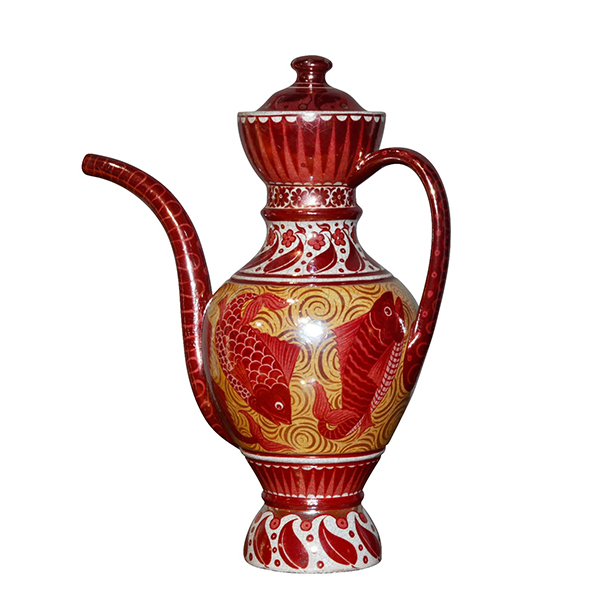
William De Morgan Lustre Design
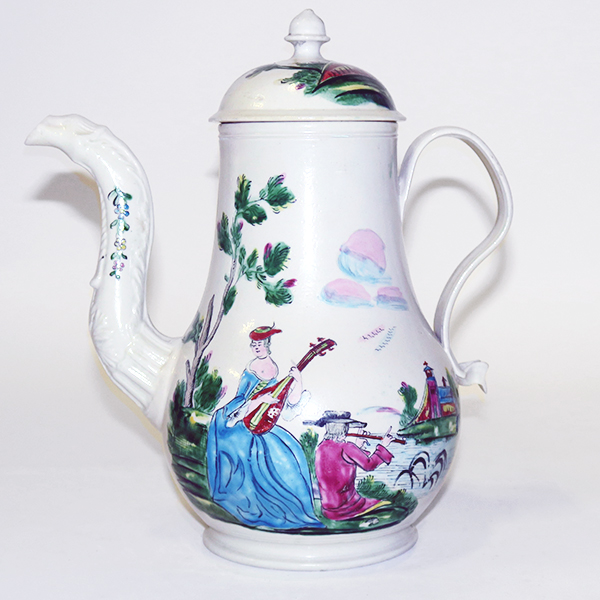
Early Staffordshire Stoneware Coffee Pot
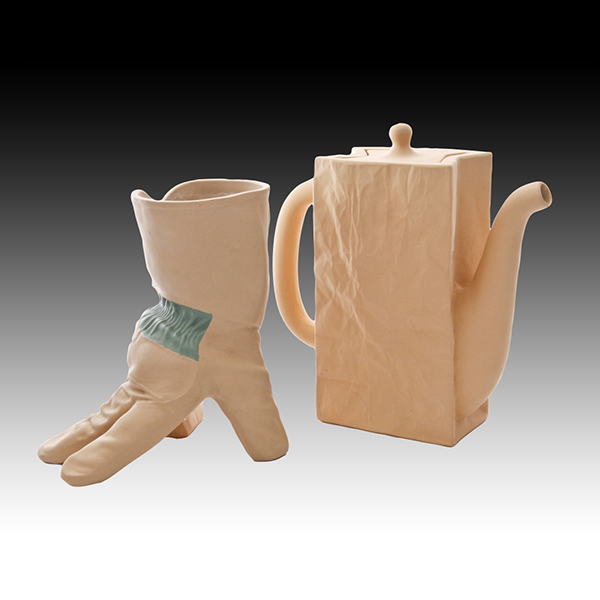
Michael Harvey Gardeners Glove & Paper Bag Pot
